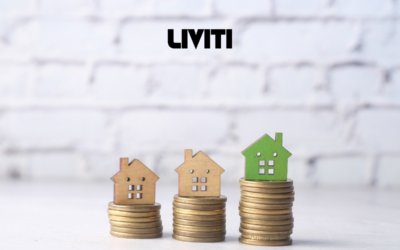Understanding and navigating the Australian property investment market in 2025 is like mastering the art of pure balance. To outperform in terms of ROI from property market in 2025 requires a nuanced understanding of its complexities and an ability to adapt to evolving trends. The current landscape is characterised by volatility, influenced by factors such as fluctuating interest rates, shifting regional dynamics, and policy changes.
On December 2024, there was a slight decline in combined dwelling values across Australia, with annual growth at 4.9%, down from the previous year’s peak of 8.5%, according to CoreLogic. This shift underscores the need for property investors to adopt a balanced strategy that mitigates risks while capitalising on emerging opportunities.

The Australian property market has always been dynamic, but the current landscape presents unique challenges and opportunities for the property investors. According to CoreLogic, combined dwelling values dipped 0.1% in December 2024 all over the country, while annual growth sat at 4.9%, significantly lower than the percentage of 8.5%, which was seen back in 2023.
These fluctuations highlight the importance of property investors and homebuyers taking a balanced approach early on to minimise the risks associated with market uncertainties. In this context, building a robust investment portfolio involves more than just selecting properties; it demands careful consideration of diversification strategies, economic drivers, and long-term growth potential. By focusing on key trends such as interest rate adjustments, shifts towards affordable housing options like units over houses, and the resurgence of regional markets, investors can position themselves for success.
What Is Balanced Property Investment?
Balanced property investment involves diversifying your property investment portfolio across different property types, locations, and market segments. It refers to real estate or property investment strategies that strategically aim to achieve a optimum balance between capital growth and rental yield for investors.
Instead of focusing solely on high capital appreciation (which may have lower rental returns) or high-yield properties (which may have limited growth potential), this strategy combines both elements to optimise long term wealth accumulation. By blending capital growth assets, high-yield properties, and stable regional investments, property investment enthusiasts can significantly mitigate investment risks while maximising ROI.

What are the Core Components of Balanced Property Investments in Australia?
- Diversification Across Locations for Capital Growth:
Investing across different regions, starting with Sydney’s inner suburbs for capital growth and regional towns like Toowoomba for cash flow. Metropolitan areas like Sydney, Melbourne, and Brisbane are best for higher capital growth due to continuous infrastructure improvement, increased employment and fast-paced urban facilities.
While there was a change in dwelling values of (-1.4%) in Sydney and (-1.8%) in Melbourne in Q4 2024, but Brisbane (+1.3%), Adelaide (+2.1%) and Perth (+1.9%) have seen a significant growth over the 2024’s last quarter.
Underperforming cities and regions yet hold very strong long-term growth potential in the property market, driven by strategic infrastructure developments and expanding employment opportunities all over the country.
Regional markets like Queensland and Victoria’s non-metro areas are experiencing a 6.0% annual growth, offering better rental yields (4.4% on average) compared to capital cities (3.5%). - Risk Diversification with Variety of Property Types:
Include residential (houses and units), commercial (offices or retail), and industrial properties. Residential properties offer stable income but lower yields; commercial properties provide higher returns but come with greater risk. - Economic Drivers:
Align investments with various economic sectors:
– Employment hubs near CBDs.
– Education areas around universities.
– Tourism hotspots or coastal regions like Kiama.
– Resource-based economies such as mining towns.
Let’s say for example, a property investor owns two residential properties in suburban Melbourne focused on capital growth ($800,000 each). To diversify further he purchased a small apartment in Hobart ($400,000) benefiting from Tasmania’s tourism boom. He also added an NDIS House leased long-term ($800,000) near Brisbane Airport for steady cash flow.
In this stretegic approach, any investor can reach their financial goal by reducing most of the risks associated for future cash flows to generate his ultimate ROI.

Benefits of a Balanced Property Investment Strategy
1. Mitigating Market Risks
Volatility in interest rates is a key concern for investors. With the RBA holding the cash rate steady at 4.35%, uncertainty looms around potential cuts in late 2025. Balanced portfolios can cushion against these shifts by including properties in less volatile regional markets.
2. Capitalising on Growth Opportunities
According to CoreLogic, properties in the lower quartile saw a 9.9% annual growth rate, outperforming higher-end markets (2.1%). Including affordable properties in your portfolio ensures steady appreciation.
3. Enhanced Rental Yields
Regional properties, as highlighted by SQM Research, have maintained consistent demand due to affordability and lifestyle migration trends. Cities like Hobart recorded 30 basis points increase in gross rental yields, showcasing their stability.
4. Financial Freedom Through Smart Leverage
Balanced investments create a sustainable income stream, helping you reinvest profits into additional properties. Over time, this strategy can lead to financial freedom by compounding returns.

Steps to Build a Balanced Property Portfolio
1. Research Market Dynamics
Always stay updated on property market trends. Analyse primary property news resources like CoreLogic, PropTrack etc. to have a visual and clear understanding of what’s going on in the property market and what was in the previous specific timeline (last month, last quarter, last year, last 2 years etc.) in Australia.
2. Diversify by Location
Combine properties in metropolitan hubs with investments in emerging regional markets. These areas can offer affordability and growth potential due to population migration.
3. Start Small
Begin with one or two properties aligned with your financial goals – cash flow or capital growth. You could start by purchasing an apartment in Adelaide’s CBD ($350,000) focusing on high rental yield (4-5%).
4. Mix Property Types
Include a variety of property types – apartments for cash flow, townhouses for balance, and detached houses for capital growth. Diversification reduces dependency on a single asset class.
5. Monitor Cash Flow vs Capital Growth
High-yield properties in regions can support immediate cash flow, while capital growth assets in cities build long-term wealth. Striking the right balance is key.
6. Expand Strategically
Diversify into different locations and property types using equity from existing assets. For example, use equity from Adelaide unit ($100k after one year) towards buying another property elsewhere—perhaps a Co-Living House near Melbourne CBD (~$550k).
7. Plan for Interest Rate Changes
Stay prepared for potential RBA rate cuts or hikes in the next coming months. Fixed-rate loans can offer stability in uncertain times.
8. Optimise
Regularly review your portfolio; rebalance by selling underperforming assets or reinvesting into better-performing markets/property types. If Melbourne’s Co-Living property outperforms expectations (~8% annual return), consider expanding more into similar opportunities while maintaining overall diversification balance across sectors/types/locations.
9. Engage Expert Guidance
Work closely with experienced property investment strategists who can provide comprehensive market analysis tailored to evolving financial goals. Here at Liviti Property, we make sure our respected customers can have their ultmate ROI using our expert investment property approach while forming a balanced investment property portfolio.
Get to know about 5 simple tips for refinancing to invest without cash.
Seasoned property investors always have a clear goal of while they are making any investment decisions. If you also wnat to be finalcially successful by property investment, set clear investment goals for achieving financial freedom through property investment.

Common Mistakes to Avoid While Building Your Property Portfolio
Over-leveraging Your Portfolio
Avoid stretching your finances thin by taking on too much debt. High loan-to-value ratios can expose you to risks during market downturns.
Ignoring Regional Opportunities
Don’t overlook the growth potential in regional markets. Areas with lower entry points often yield higher ROI over time.
Failing to Adapt to Market Changes
The 2025 property market requires agility. Regularly reassess your portfolio to align with changing trends and economic conditions.
Want to leverage the government system to build wealth through property investment? Click on the image below.

Why Balancing Your Property Investment Portfolio Matters More Than Ever?
The Australian property market in 2025 is a testament to the power of balance. With affordability pressures, volatile interest rates, and regional growth opportunities, investors need to adopt a measured approach. A balanced portfolio not only mitigates risks but also positions you to capitalise on market highs, ensuring long-term financial freedom.
Contact us to have a in detailed discussion for well-researched, balanced approach to build your property investment portfolio to maximising ROI in the current Australian property market.




